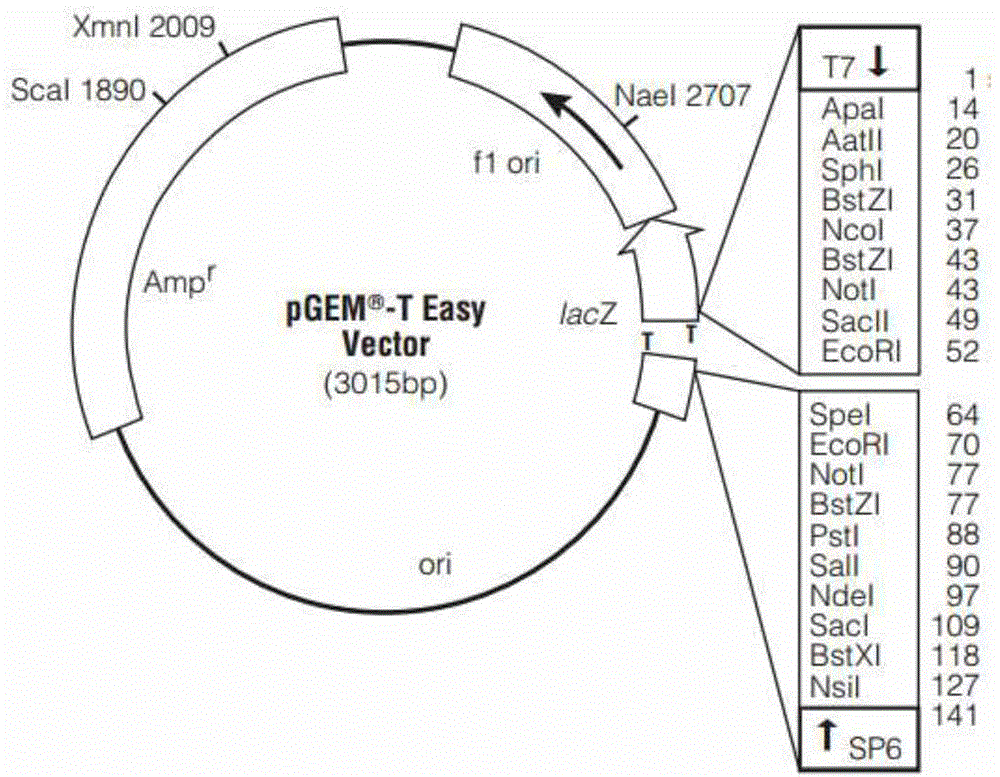Rapeseed Seed Production Method Using Herbicide Resistance Gene
A herbicide-resistant gene and rapeseed technology, applied in botany equipment and methods, plant gene improvement, application, etc., can solve the problems of reducing seed production yield, restricting the production scale of hybrids, increasing production costs, etc.
- Summary
- Abstract
- Description
- Claims
- Application Information
AI Technical Summary
Problems solved by technology
Method used
Image
Examples
Embodiment 1
[0034] Embodiment 1: Obtaining of tribenuron-methyl-resistant Brassica napus strains
[0035] (1) Weigh 1000g of high-quality homozygous Huashuang No. 5 seeds (this material is provided by the Rape Genetics and Breeding Research Office of Huazhong Agricultural University, which is a new variety of Brassica napus popularized in China), and soak the seeds in double distilled water 8 hours. The soaked seeds were placed in 0.30% chemical mutagen ethyl methanesulfonate (EMS) and stirred in time to make them fully mutagenized. After 18 hours of mutagenesis, rinse with tap water for 3-4 hours, and slightly dry the mutagenized seeds.
[0036] (2) Sow untreated Huashuang No. 5 in the experimental field of Huazhong Agricultural University, sow 8 plants in each row, and spray 0mg / L twice every other week after 4-6 true leaves, design 0.01mg / L, 0.025 mg / L, 0.5mg / L, 2.5mg / L, the herbicide tribenuron-methyl solution of different concentrations of 5.0mg / L, observe the phenotype after 20 da...
Embodiment 2
[0041] Example 2: Cloning of Tribesulfuron-methyl-resistant Gene in Brassica napus
[0042] (1) Utilize the CTAB method (a common method in this field) to extract the genomic DNA of Brassica napus Huashuang 5 (wild type) and resistant strains, and use specific primers (as shown below) to identify genes that may be associated with resistance The Open-reading frame (ORF) of two AHAS homologous genes (AHAS1, AHAS3) in Brassica napus were amplified separately. The amplification primers of BnaAHAS1 gene (gene accession number Z11524) are BnaAHAS1-F (TCAAGAACAGTTAGATCCAC) and BnaAHAS1-R (GATCACCAGCTTCATCTCT); the amplification primers of BnaAHAS3 gene (gene accession number Z11526) are BnaAHAS3-F (CTCTCTCTCTCTCATCCAT) and BnaAHAS3-R (ACTGAAACTAAGTCTTTTTACCAT).
[0043] (2) KOD-plus-standard reaction system (TOYOBO) was used for gene amplification. The 50μl PCR reaction system included: 100ng genomic DNA template, 5μl 10×PCR buffer for KOD-plus-, 5μl dNTPs (2mM), 2μl MgSO 4 (25mM),...
Embodiment 3
[0051] Example 3: Identification of the mutation site of the tribenuron-methyl-resistant gene in Brassica napus
[0052] (1) Using Clustal Omega (http: / / www.ebi.ac.uk / Tools / msa / clustalo / ) to compare the BnaAHAS1 and BnaAHAS3 gene sequences of the wild-type and resistant strains.
[0053] The result is as Figure 7As shown, in the resistant strain M45, the BnaAHAS3 gene had two mutation sites, namely base 96 and base 536, where cytosine (C) was mutated to thymine (T).
[0054] (2) The amino acid sequences of the two genes of the wild-type Huashuang 5 and the resistant strain M45 were compared, analyzed and displayed using the same method as above.
[0055] The result is as Figure 7 As shown, the 197th proline (Pro) of the BnaAHAS3 gene of the resistant strain M45 has been mutated into leucine (Leu) (using the Arabidopsis amino acid position nomenclature, see: gene accession number At3g48560, http : / / www.arabidopsis.org / ); this mutation site is consistent with the 17 herbic...
PUM
 Login to View More
Login to View More Abstract
Description
Claims
Application Information
 Login to View More
Login to View More - R&D
- Intellectual Property
- Life Sciences
- Materials
- Tech Scout
- Unparalleled Data Quality
- Higher Quality Content
- 60% Fewer Hallucinations
Browse by: Latest US Patents, China's latest patents, Technical Efficacy Thesaurus, Application Domain, Technology Topic, Popular Technical Reports.
© 2025 PatSnap. All rights reserved.Legal|Privacy policy|Modern Slavery Act Transparency Statement|Sitemap|About US| Contact US: help@patsnap.com



